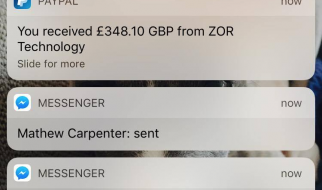I recently tried to explain the workings of the infamous Four Horsemen deck to some folks, in a short period of time, and decided that I would like to have a primer on hand to share. This is to be the result of that desire.
Four Horsemen is a deck that is pseudo-banned in the Legacy format of Magic: the Gathering. I say pseudo-banned because, strictly speaking, you may elect to play the deck in a tournament, but you have to pilot it very carefully to not receive penalties including game losses for slow play. The reason for this is that Four Horsemen is a deck which relies on a recursive loop of shuffling your Library in order to get the correct card orderings so that you can execute a combo finish. The recursion loop is formed through three cards: Mesmeric Orb, Basalt Monolith, and Emrakul, the Aeons Torn. Mesmeric Orb is a two-cost artifact which forces a player to place the top card of their library into their graveyard whenever they untap a permanent. Basalt Monolith is a three-cost artifact which taps to add three colorless mana to your mana pool, does not untap during your untap step, and can be untapped by paying three generic mana. Using these two cards, you can place your entire deck into your graveyard, and at some point along the line you will place Emrakul into it, and Emrakul has an effect which causes you to shuffle your graveyard into your library whenever she goes to the graveyard from anywhere.
The above loop has three purposes. The first is to place at least three Narcomebas into play ? it being a creature which enters the battlefield if it is placed into the graveyard from your library. The second is to use the Narcomebas to pay the flashback cost of Dread Return ? flashback cost is sacrificing three creatures, effect is returning a creature from your graveyard to play ? to return Sharuum, the Hegemon to the battlefield. When Sharuum enters play, you man return an artifact from your graveyard to play, and the target you?ll be aiming for is Blasting Station. Blasting station has the effects ?Tap, sacrifice a creature: Blasting Station deals 1 damage to target creature or player? and ? Whenever a creature enters the battlefield, you may untap Blasting Station.? The third purpose of the loop is to bring forth the four Narcomebas in the deck ? the Four Horsemen for whom the deck is named ? to shoot your opponent an arbitrary number of times, winning the game.
The problem comes with the second phase. In a finite time frame, there is no guarantee that you will get Dread Return, Sharuum, and Blasting Station into the graveyard before finding Emrakul and having to shuffle. Since Dread Return is a sorcery, you have to let all spells and abilities resolve before you can cast it, so you MUST have the correct deck configuration in order to assemble the combo. The issue of finite time is one that is often subverted in Magic, however, through the introduction of loops. If you have cards in play which allow you to perform a set of actions and arrive at the same game state with a single alteration, say an additional free mana, you can declare that set of actions to be a loop and declare that you repeat the loop an arbitrary number of times. This is a well accepted practice in the Magic community.
The loop used in Four Horsemen, however, is slightly different from most. If you have your four Narcomebas in play, and you execute your deck depleting loop in search of the right card combination to assemble the win, only to have to shuffle your deck and try again, the game state is only changed in as much as your deck has assumed a new random state, likely distinct from the one it had before executing the loop. Mathematically, one can prove that in an infinite number of randomizations, any finite set will assume every possible arrangement an infinite number of times. Thus, you could validly declare that you perform the shuffling operation an infinite number of times to achieve the desired deck configuration, and then proceed to arrange your deck in the state you desire and execute the final iteration.
At least, one would assume that to be the case. In reality, however, a ruling was made that randomizing your library is not an advancement of the board state. Since the board state is not distinct from one iteration of the loop to the next, or rather there is no guarantee that the board state after iteration N+1 will be different from the board state after iteration N, the shuffle ?loop? is not allowed to be declared an official loop. This means that you must execute the loop manually every time, hoping to find the right pieces in the right order. If you do nothing but execute the loop, you will be considered to be exhibiting ?slow play?, which can be penalized with game losses. This ruling effectively killed the deck.
The sadness of it all is that the deck is remarkably resilient once it has its engine online. If the opponent attempts to interrupt your casting of Dread Return, you can simply resume the loop and shuffle up, let their spell happen, and try again. Since you have four Narcomebas in your deck, your opponent has to find a way to permanently get rid of two of them while you?re executing your assembly loop in order to prevent you casting Dread Return to begin with. If they find a way to destroy Blasting Station, you can sacrifice Sharuum to it and rebuild with a second Dread Return. It is an extremely powerful deck, whose only weakness is a quirk of the rules which doesn?t accept mathematical theorems as the grounds for a loop.
Perhaps a day will come when such a theorem would be accepted by Magic judges, but for now, Four Horsemen exists largely as a footnote in Magic history. Strictly speaking you CAN play the deck, but you?ll have to spend every game convincing a judge that you?re playing at a brisk pace, which means finding ways to waste time between loops, changing the board state for no value.

